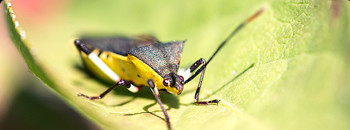April is National Lawn Care Month and that means it is time for you to get outside and starting working on your lawn and garden. A lawn can do more than just be a source of pride for American homeowners. A lush, green lawn can reduce allergies, boost real estate value and lower the amount of dust and soil runoff in a community. Here’s a quick look at how your lawn can go to work for you:
- Reducing allergies
Of all Americans who are allergic to pollen-producing plants, 75 percent are allergic to ragweed. While a single ragweed plant may only live for one season, it produces up to one billion pollen grains during that time. More than one half of the U.S. population is allergic to noxious weeds such as poison ivy, poison oak and poison sumac. Keeping the growth of these weeds at bay keeps everyone feeling better, too.
- Boosting your real estate value
Nothing beats a first impression. When prospective buyers are searching for a new home, well-landscaped lawns and nearby parks are important factors.
“Potential buyers can be immediately swayed by an unsightly yard, leaving them to wonder if the lack of care and attention to the lawn has been carried to the inside of the house,” said Gray Mattern, Realtor in St. Petersburg, Fla. “If the buyer doesn’t get past the negative first impression, he or she may decide to bypass the home completely without looking at the interior. In this buyer’s market, it’s important to appeal to a wide range of prospective buyers.”
- Reducing dust and soil erosion
Healthy grass holds soil in place and prevents runoff from being washed into lakes, rivers and streams. The University of Minnesota released results of a research study showing a lawn that is not fertilized actually has more runoff than a lawn that is properly fertilized, due to the increased health of the grass.
“Proper lawn care practices will be rewarded by an aesthetically pleasing property and will result in a variety of environmental benefits,” explained Cathie Lavis, horticulture professor, Kansas State University, Manhattan, Kan. “A key factor to success is selecting the right grass variety for both your region and particular site conditions.”
Choose Right and Use Right
Two elements of good lawn health are proper pesticide and fertilizer use. A properly fertilized, healthy lawn helps prevent weeds, while pesticides control weed populations already present or before they emerge. Proper pesticide use also keeps grubs and insects at bay.
When selecting and using pesticides and fertilizers, the product label directions must be followed to make sure the product works properly and is used in a safe and environmentally sound way. Product labels specify the amount of product that should be applied, how much is needed for your treatment conditions, and how to safely apply and store products.
Celebrate!
So, what are you going to do to celebrate the month? Post pictures of your hard-working lawn on our Facebook page, send us a tweet or post a comment here to share your tips for maintaining outdoor spaces. We’ll be offering tips from our resident experts through Twitter, Facebook, and this blog all the month. Check back frequently to get some helpful hints!

